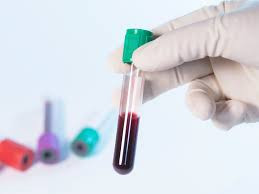Definition
Lead is a naturally occurring soft metal present in the earth's crust. It is a common element, and trace amounts are found in our bodies due to its prevalence in the environment. However, elevated lead exposure can pose significant health risks. When lead is ingested, inhaled, or absorbed through various means, it can harm the brain and other vital organs.
A primary source of lead exposure is old buildings that contain lead-based paint. Additionally, lead may be present in water from lead-containing pipes and in certain high-risk occupations, such as battery manufacturing. Blood lead (Pb) level analysis is conducted to assess lead exposure, monitor the effectiveness of treatments, and ensure a reduction in blood lead levels over time.
Indications
This test is typically recommended by physicians as an initial evaluation for children and as part of diagnosing potential lead poisoning. Initial lead screening is often performed at ages 6, 9, 12, 18, and 24 months, and again at ages 3, 4, 5, and 6 years. Children under 6 are at a heightened risk for lead exposure, particularly if they reside in older homes or areas with lead-based plumbing.
Some symptoms indicative of lead poisoning include:
- Abdominal pain
- Anemia (reduced red blood cell count)
- Nausea or vomiting
- Unexplained weight loss
- Excessive fatigue
- Muscle weakness
- Headaches, potentially leading to seizures
- Difficulty concentrating
- Behavioral changes or learning difficulties
This test is also valuable for assessing the effectiveness of lead poisoning treatments.
Contraindications
The blood lead (Pb) level test is generally considered safe, with minimal associated risks. There are no specific contraindications related to this test, and it closely resembles a standard blood draw. Consult your doctor to understand the procedure and ensure it aligns with your health needs.
Preparation Before the Test
No special preparation is required before a blood lead (Pb) test. Fasting is unnecessary unless you are undergoing other tests that require it. Discuss any medications you are taking with your doctor to determine if any should be paused before testing.
It is advisable to inform your physician if you are experiencing specific conditions, such as menstruation or pregnancy. Additionally, consult your doctor about any medications you take and whether adjustments are needed before testing.
Test Procedure
Blood lead (Pb) analysis involves a simple blood test. A lab technician will sterilize your arm with alcohol and use a sterile syringe to draw a small blood sample from a vein in your arm. Some discomfort, such as moderate pain or a stinging sensation, may occur when the needle is inserted.
For infants, blood is drawn from the heel. The blood sample is then placed into a tube and analyzed by laboratory personnel using specialized equipment. After the blood is drawn, applying pressure to the puncture site helps prevent bruising or swelling. The risks associated with blood draws are minimal, though some individuals may experience pain, dizziness, or slight bruising, which typically subsides quickly.
Normal and Abnormal Values
In children, a blood lead level of 5 mcg/dL is considered safe. A lead level above 45 mcg/dL is abnormal, indicating elevated lead exposure. In adults, normal levels are generally around 10 mcg/dL. Levels between 10 and 25 mcg/dL suggest frequent lead exposure, while levels above 80 mcg/dL indicate the need for medical intervention.
Results and Recommendations (Further Testing)
If blood lead test results reveal increasingly elevated levels, this indicates a rise in lead concentration within the bloodstream. Elevated levels may be due to lead storage in bones and teeth, as they can serve as reservoirs for lead. For children, it is essential to identify the exposure source and consider additional tests to assess the need for further treatment.
In pregnant women, lead exposure is particularly concerning because lead can cross the placenta, potentially impacting fetal development. Limiting lead exposure during pregnancy is essential for fetal health.
Consult the Right Doctor
If your lead (Pb) analysis results are abnormal, consult a general practitioner to obtain an appropriate diagnosis and therapy. Your doctor may recommend further testing, such as liver function tests, to clarify the extent of exposure and guide the next steps. In some cases, consulting an internal medicine specialist may also be beneficial.
Want more information on laboratory, radiology, and other test results? Click here!
- dr. Monica Salim
Lead Test. (2023). Retrieved 24 July 2023, from https://www.testing.com/tests/lead/
Lead (Blood). (2023). Retrieved 24 July 2023, from https://www.urmc.rochester.edu/encyclopedia/content.aspx?contenttypeid=167&contentid=lead_blood
Lead Blood Test : What to Expect. (2021). Retrieved 24 July 2023, from https://www.webmd.com/a-to-z-guides/lead-blood-test-what-to-expect
Lead Levels - Blood. (2023). Retrieved 24 July 2023, from https://www.mountsinai.org/health-library/tests/lead-levels-blood









